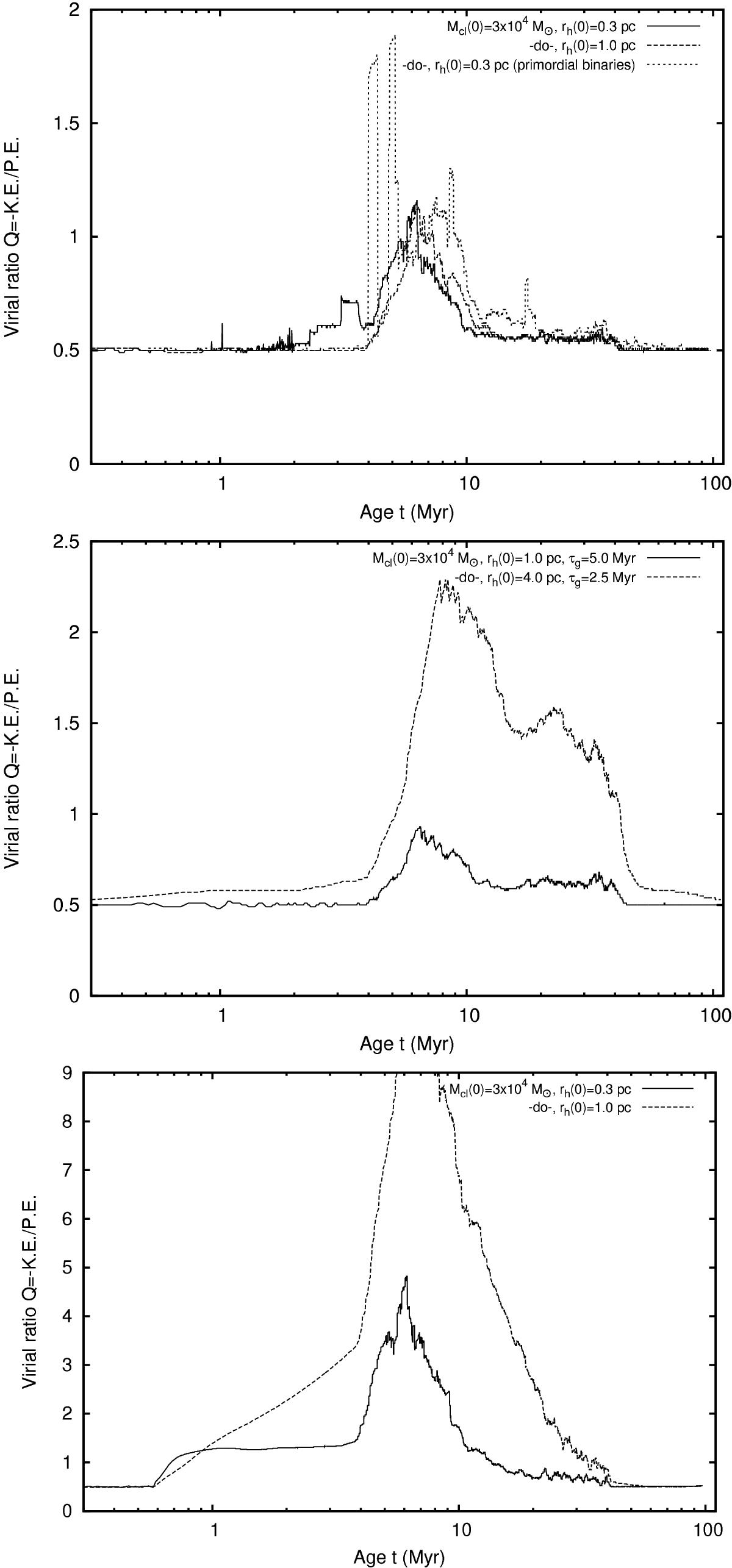Fig. 9

Evolution of the virial ratio Q, i.e. the ratio of the total kinetic to potential energy of the bound cluster members for representative computed cluster models without gas expulsion (top panel) and those with placid (middle) and explosive (bottom) gas expulsion. For the cases without and with placid gas expulsion, Q ≈ 0.5, i.e. the system is in dynamical equilibrium over most of the evolutionary times. In these two cases, Q temporarily grows (i.e. the cluster becomes supervirial) after t ≈ 4 Myr (which corresponds to a rapid expansion of the clusters’ core) owing to substantial mass loss due to supernovae. This phase lasts ≈ 50 Myr over which the BHs and the NSs form. The placid gas expulsion aids this non-dynamical-equilibrium expansion phase of the cluster resulting in larger growth of Q (cf., middle and top panels). For explosive gas removal, a cluster expands in a super-virial manner from the beginning of gas expulsion (τd ≈ 0.6 Myr) and becomes even more super-virial when the supernovae begin (bottom panel). Like the other cases, the system eventually returns to dynamical equilibrium when the supernova mass loss is quenched. As expected, in all the cases the growth of Q is larger for the initially more extended cluster.
Current usage metrics show cumulative count of Article Views (full-text article views including HTML views, PDF and ePub downloads, according to the available data) and Abstracts Views on Vision4Press platform.
Data correspond to usage on the plateform after 2015. The current usage metrics is available 48-96 hours after online publication and is updated daily on week days.
Initial download of the metrics may take a while.





